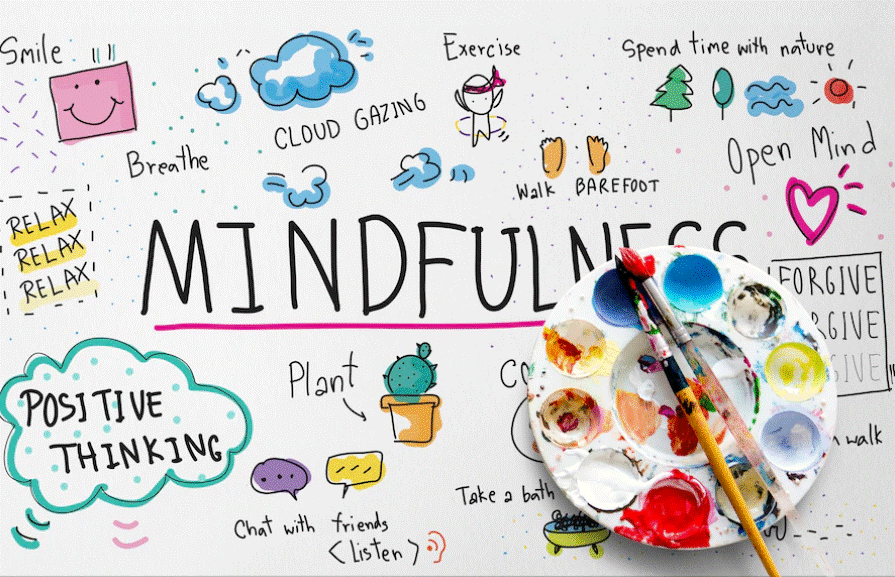Practising Haptonomie mindfully can significantly enhance your experience and benefit from this therapeutic approach. Haptonomie, focusing on the therapeutic power of touch and presence, thrives on intentional and conscious engagement. In this article, we’ll share ways to practice Haptonomie mindfully, ensuring that you make the most of this valuable practice.
Tips for Practising Haptonomie Mindfully
1. Start with Self-Awareness
The first step in practising Haptonomie mindfully is to cultivate self-awareness. Before engaging in any sessions, take a few moments to centre yourself. Pay attention to your feelings, physical sensations, and thoughts. Understanding your current state will help you approach Haptonomie with a clear mind and open heart.

2. Set Clear Intentions
Setting clear intentions is crucial for mindful practice. Decide what you hope to achieve through Haptonomie. Whether it’s emotional healing, relaxation, or improving your connection with others, having a clear goal will guide your practice and help you stay focused.
3. Create a Calm Environment
To practice Haptonomie mindfully, create a calm and supportive environment. Choose a quiet space where you won’t be disturbed. Soft lighting, comfortable seating, and soothing music can enhance your focus and relaxation during the practice.
4. Engage in Deep Breathing
Deep breathing is a fundamental technique for mindfulness. Before and during your Haptonomie sessions, use deep breathing exercises to relax and centre yourself. Inhale deeply through your nose, hold for a few seconds, and exhale slowly through your mouth. This will help you stay present and engaged in the practice.
5. Focus on Sensory Experience
Practising Haptonomie mindfully involves paying close attention to sensory experiences. As you engage in touch-based exercises, focus on the sensations you’re feeling. Notice the texture, temperature, and pressure of the touch. Being aware of these sensory details will deepen your experience and connection.
6. Practice Active Listening
Active listening is an important aspect of mindful practice. When engaging in Haptonomie, listen carefully to the cues and feedback from your partner or instructor. Respond with empathy and sensitivity, ensuring that you’re fully present and attentive to their needs.
7. Embrace Presence
Being present in the moment is a key element of mindfulness. During Haptonomie sessions, let go of distractions and focus entirely on the experience. Avoid letting your mind wander to past or future concerns. Embrace the present moment and fully immerse yourself in the practice.
8. Use Gentle Touch
Practising Haptonomie mindfully involves using a gentle and considerate touch. Be aware of the amount of pressure you apply and adjust according to the comfort of the person you’re working with. Gentle touch fosters a safe and supportive environment for healing and connection.
9. Reflect on Your Experience
After each Haptonomie session, take time to reflect on your experience. Consider how the practice made you feel, what you learned, and how it impacted you. Reflecting on your experiences will help you gain insights and improve your future practice.
10. Stay Open to Learning
The mindful practice of Haptonomie involves staying open to learning and growth. Be receptive to new techniques, feedback, and insights from others. Approach each session with a willingness to explore and adapt, enhancing your overall experience.
11. Incorporate Mindfulness into Daily Life
Extend the principles of mindfulness beyond your Haptonomie sessions. Practice being mindful in your daily activities, such as eating, walking, or interacting with others. Integrating mindfulness into everyday life will enhance your overall well-being and support your Haptonomie practice.
12. Prioritize Self-Care
Self-care is essential for maintaining a mindful practice. Ensure you’re taking care of your physical, emotional, and mental well-being. Adequate rest, balanced nutrition, and stress management contribute to a more effective and fulfilling Haptonomie practice.
13. Connect with a Community
Joining a Haptonomie community or group can support your mindful practice. Engage with others who share your interest in Haptonomie. Participating in group sessions or discussions can provide valuable insights, encouragement, and a sense of connection.
14. Practice Patience
Mindfulness requires patience and persistence. Be patient with yourself and your progress in practising Haptonomie. Understand that mindfulness is a journey, and growth takes time. Celebrate your efforts and progress, no matter how small.
15. Seek Professional Guidance
If you’re new to Haptonomie or seeking to deepen your practice, consider seeking guidance from a professional. A qualified practitioner can provide valuable insights, techniques, and support for practising Haptonomie mindfully.
Conclusion
Practising Haptonomie mindfully involves a combination of self-awareness, intentionality, and presence. By setting clear intentions, creating a supportive environment, and focusing on sensory experiences, you can enhance your Haptonomie practice. Incorporate these strategies into your routine to deepen your connection and gain the full benefits of this therapeutic approach. Remember, mindfulness is a journey, and each step you take brings you closer to a more fulfilling practice.




